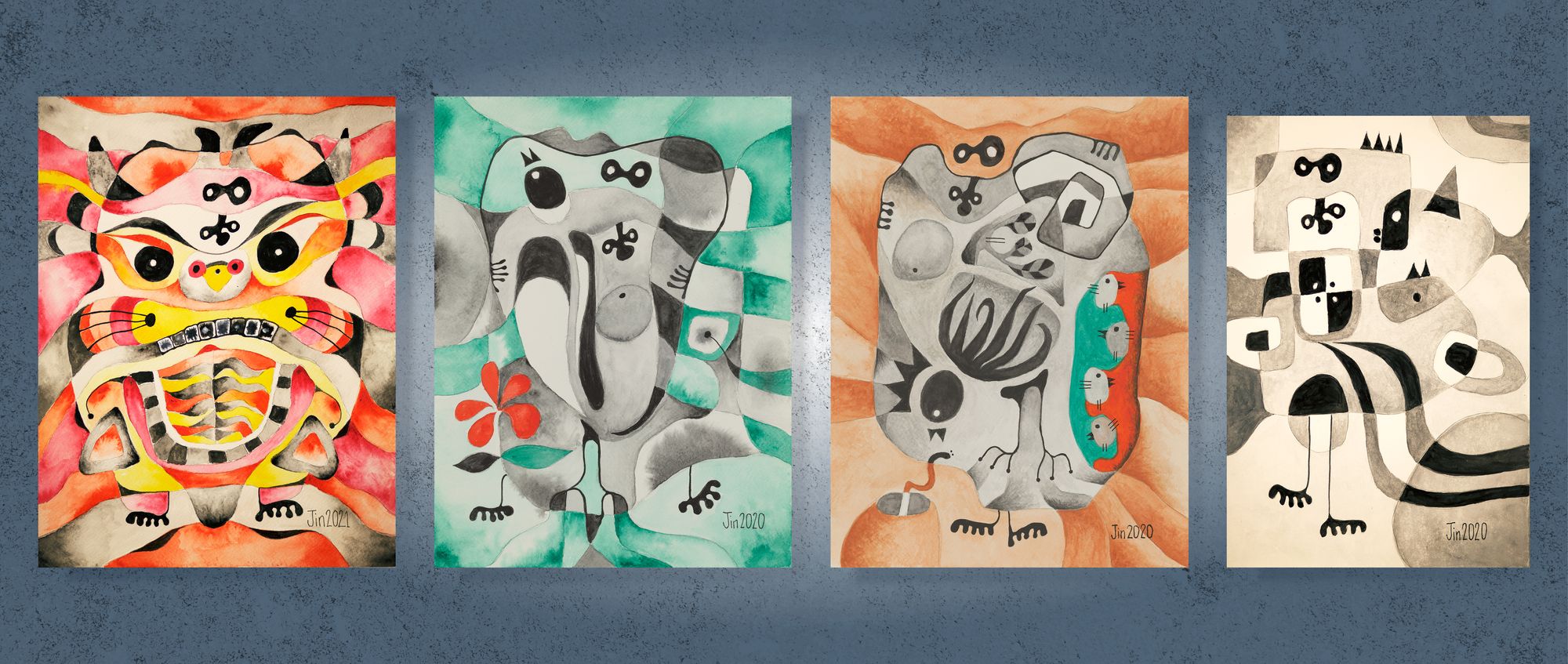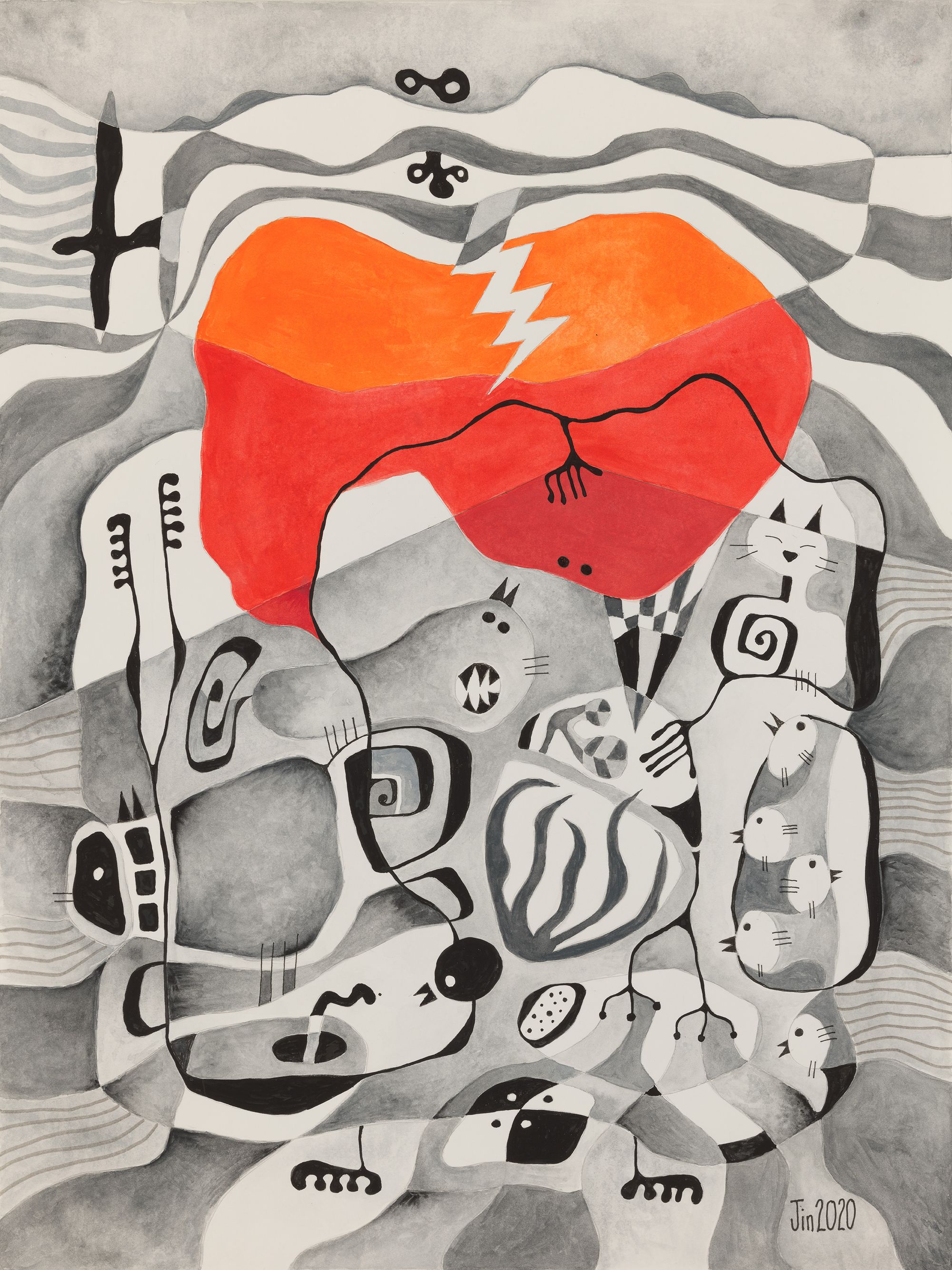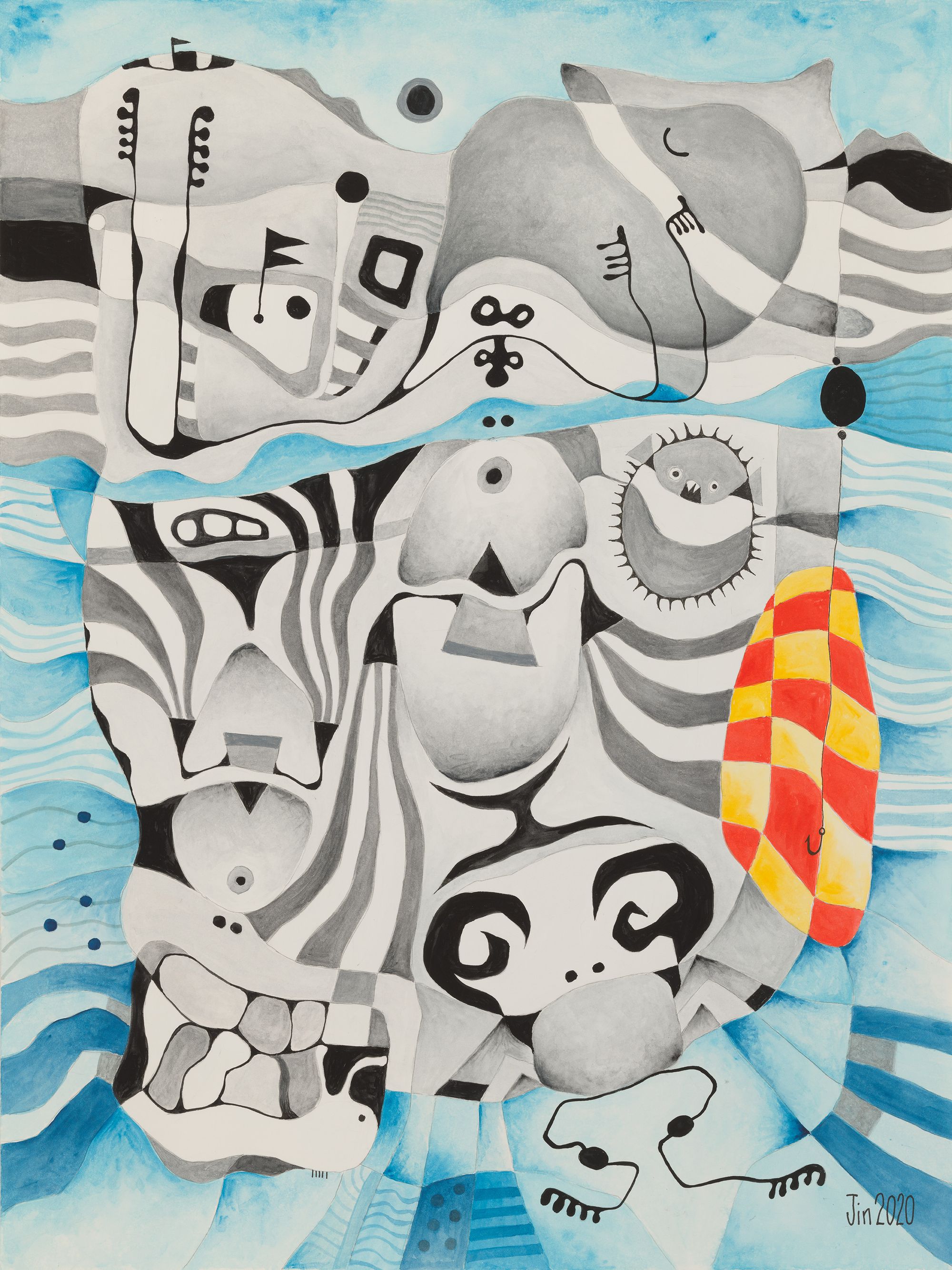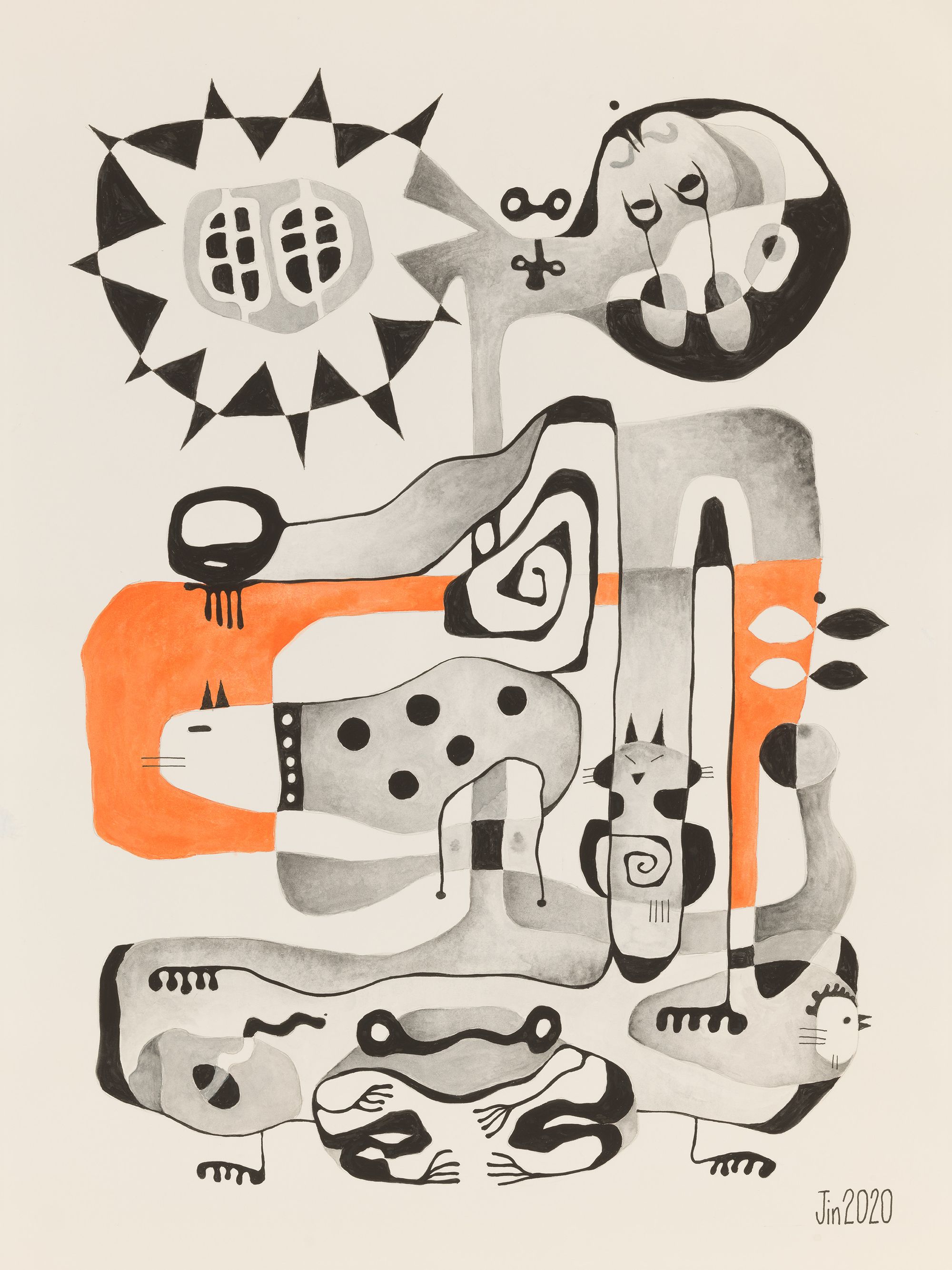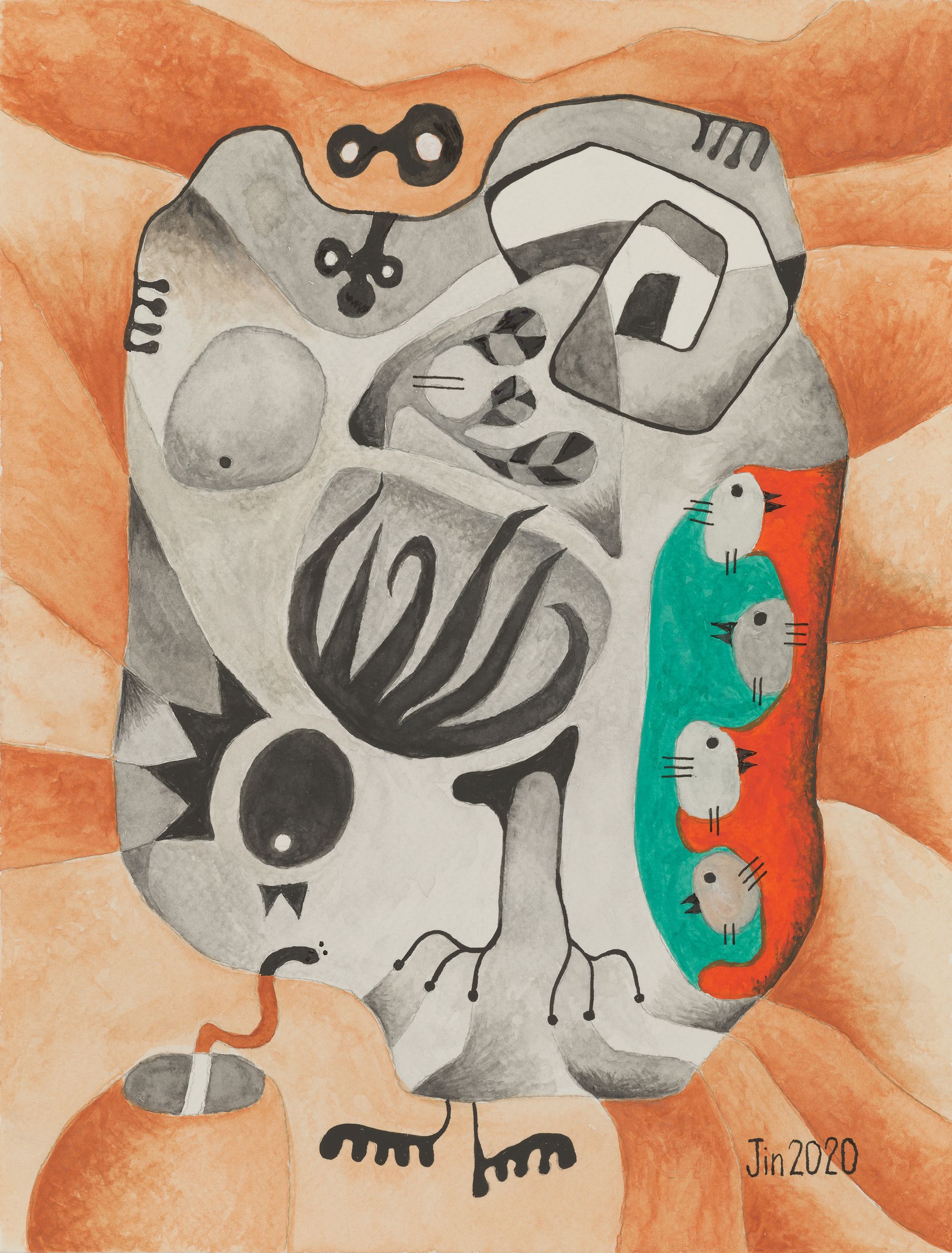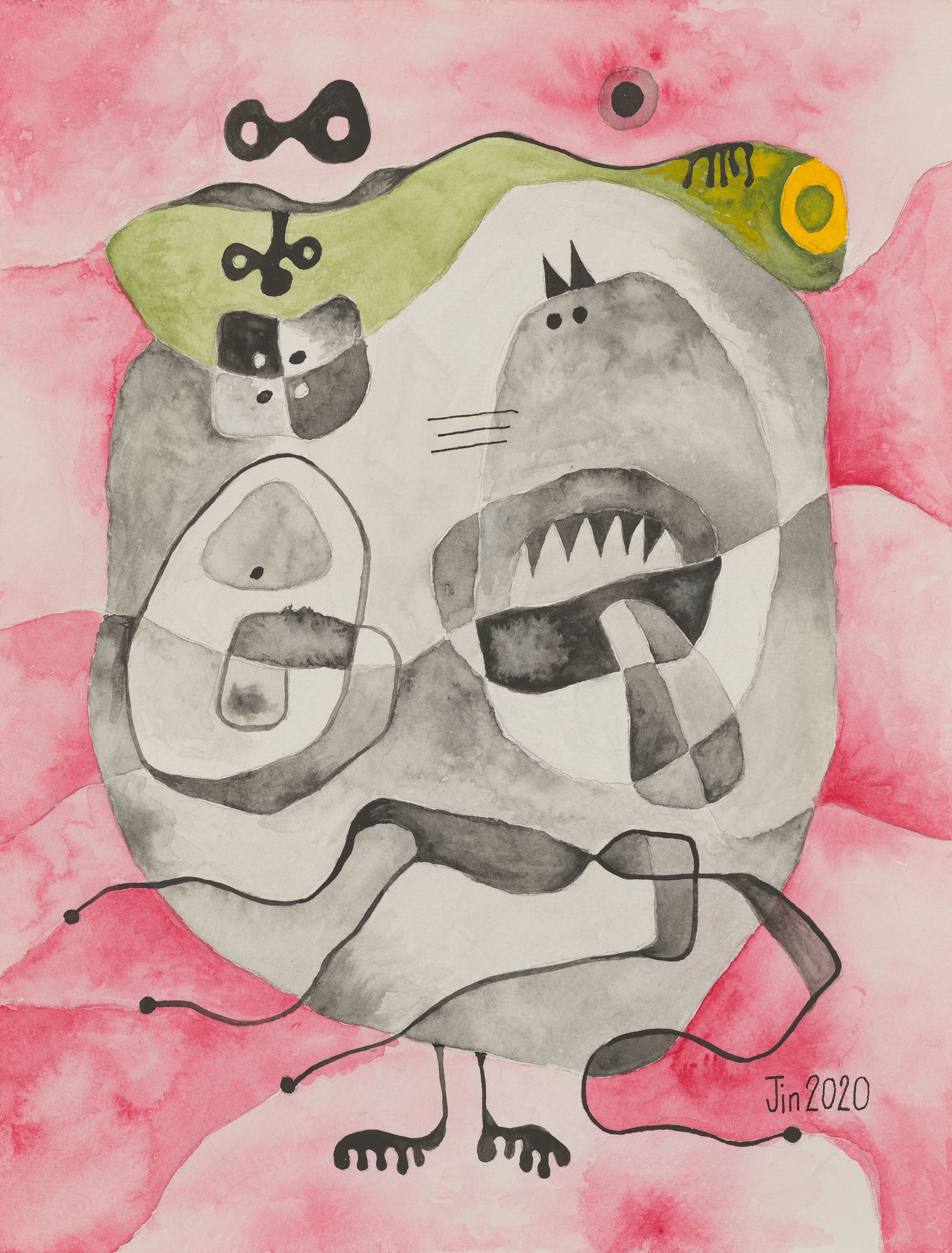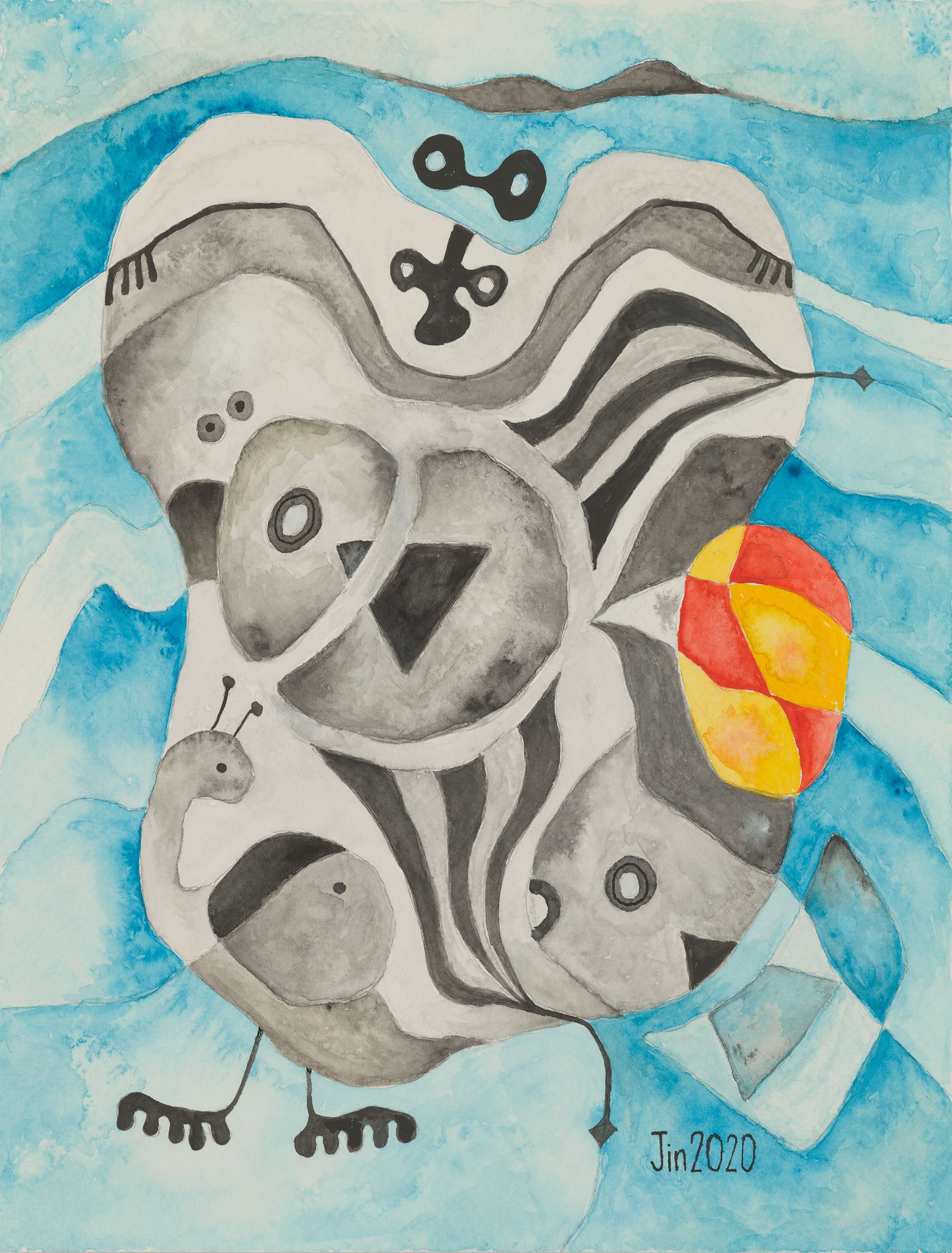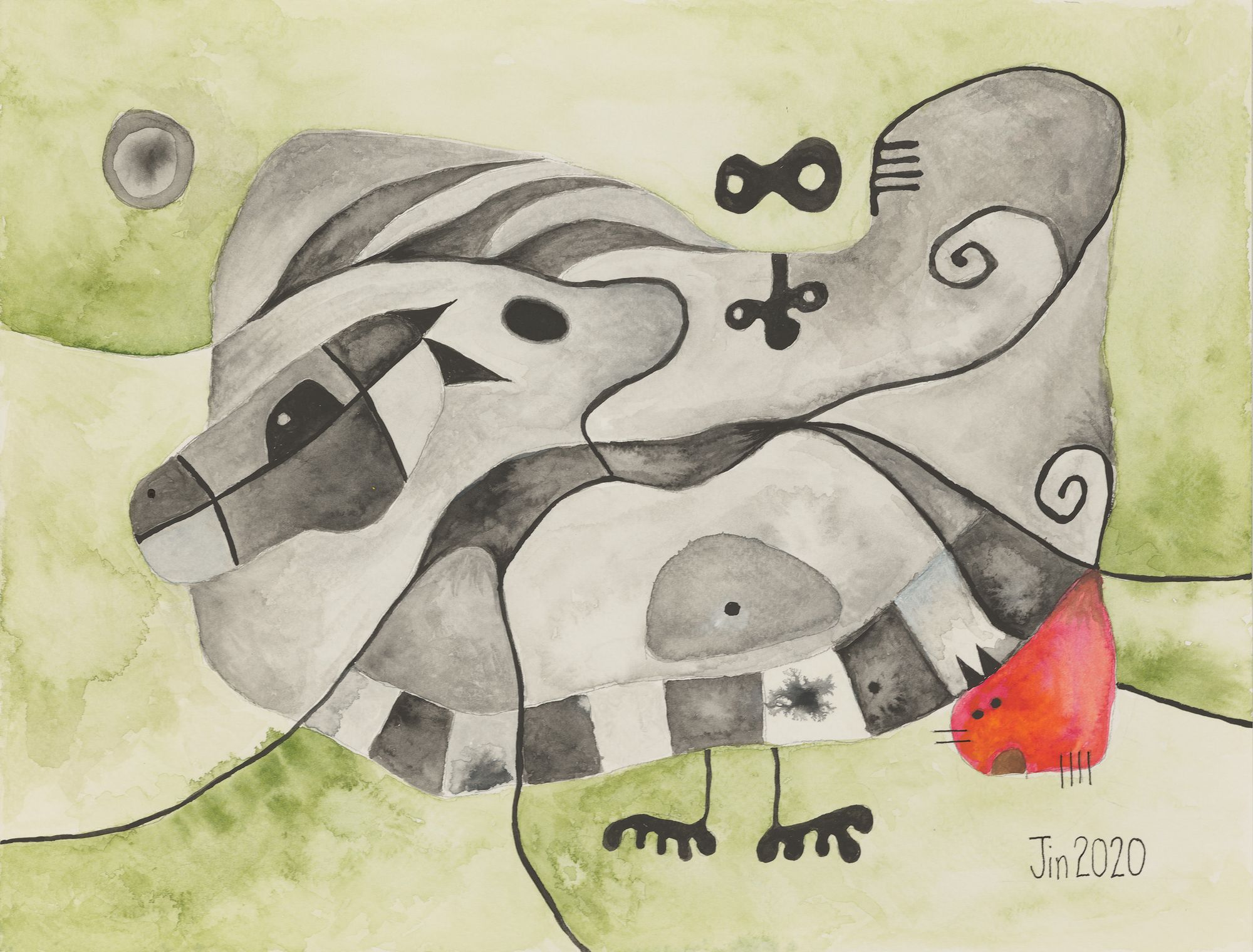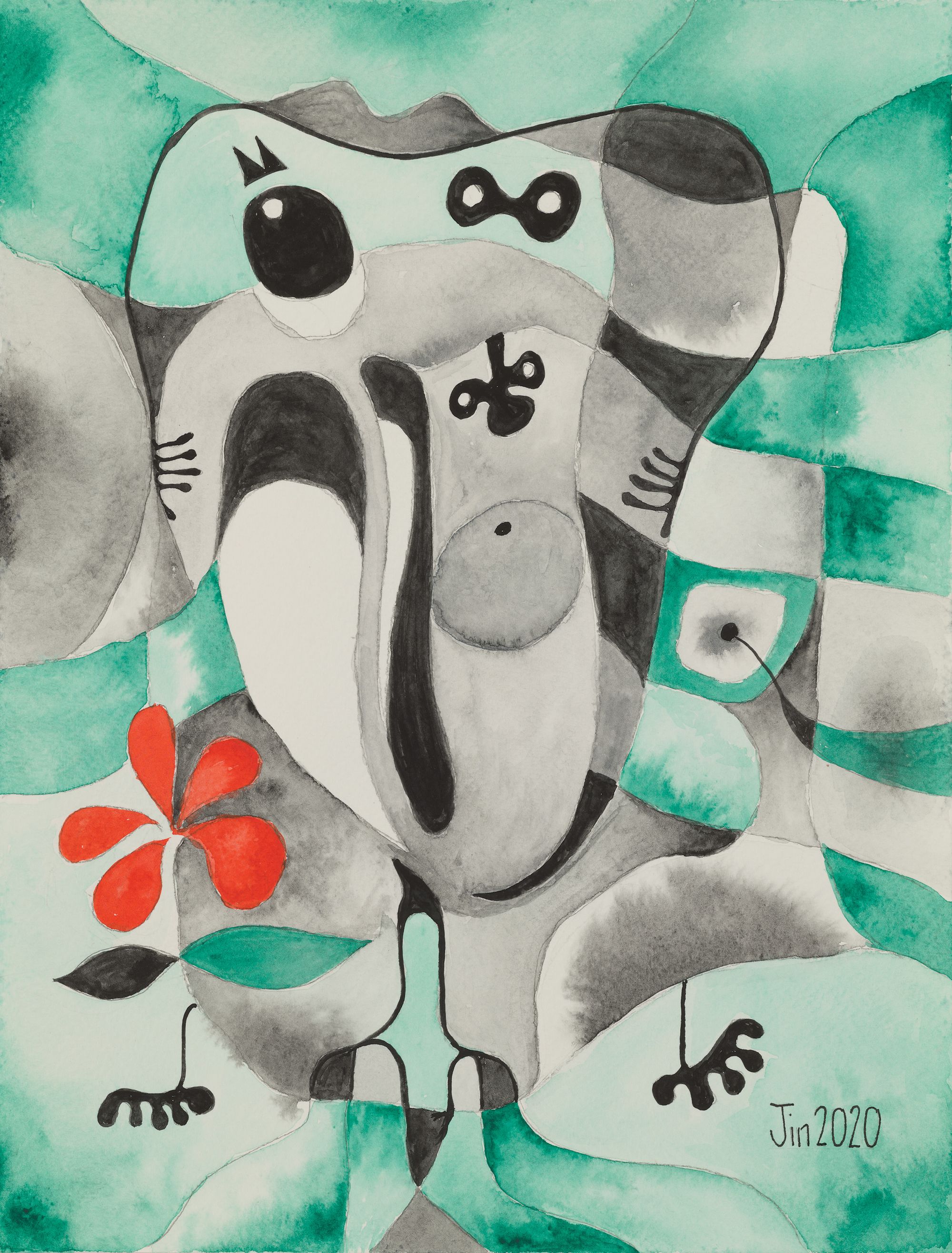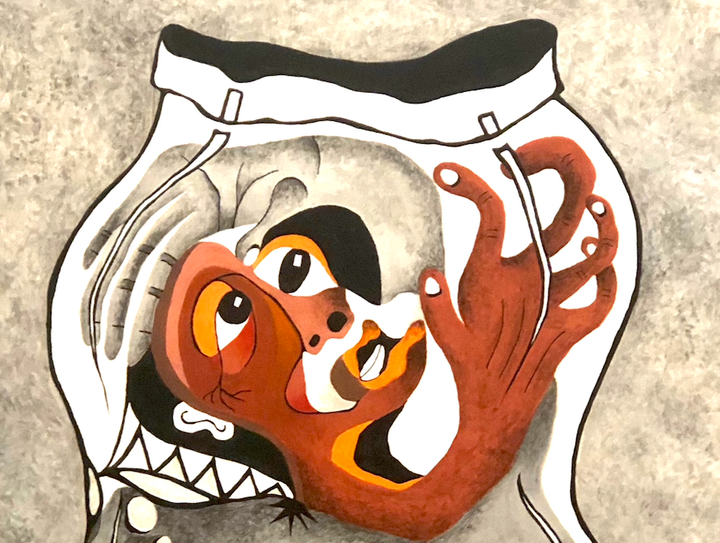Unconnected?
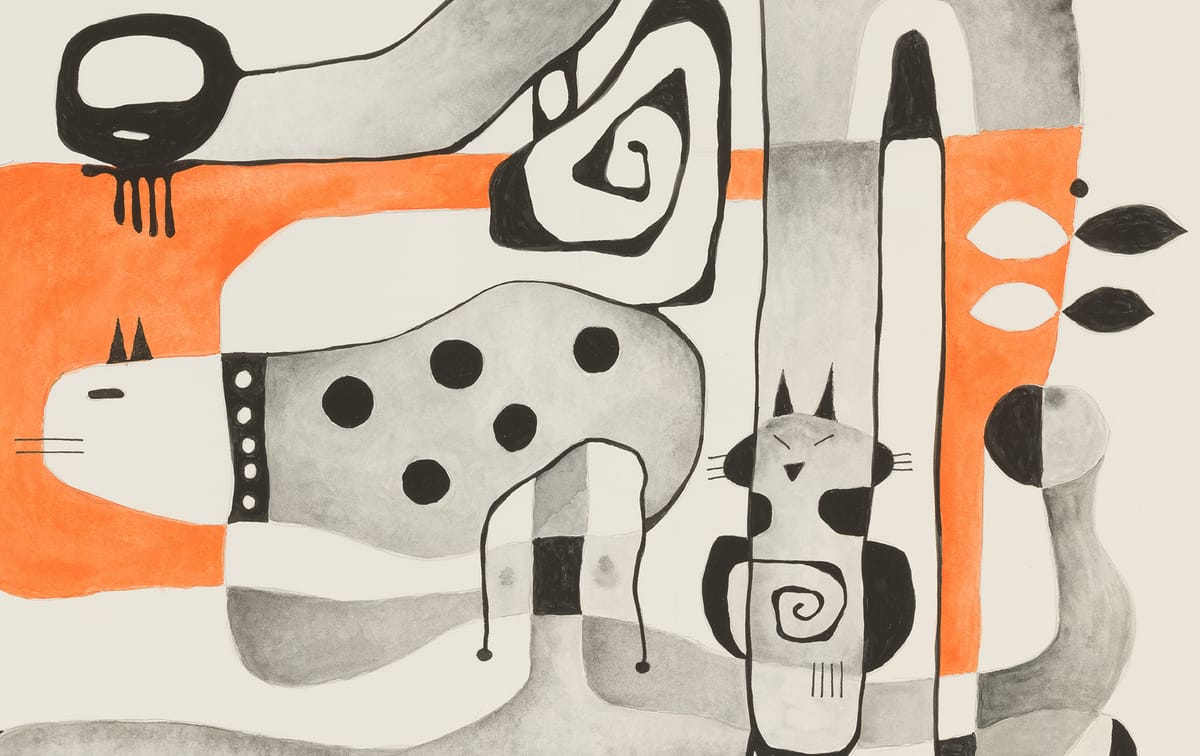
IN THIS SERIES, I assemble seemingly unconnected but related shapes in two or three visual perspectives so that they can be seen differently if you focus on each part.
From a distance, you see a piece of art using a controlled palette (three or four colours) and emotionally-pleasing shapes with comfortable grey and white spaces in between them. These neutral colours — as we have used in print design — give pleasantness, some sort of visual respite, to the viewer.
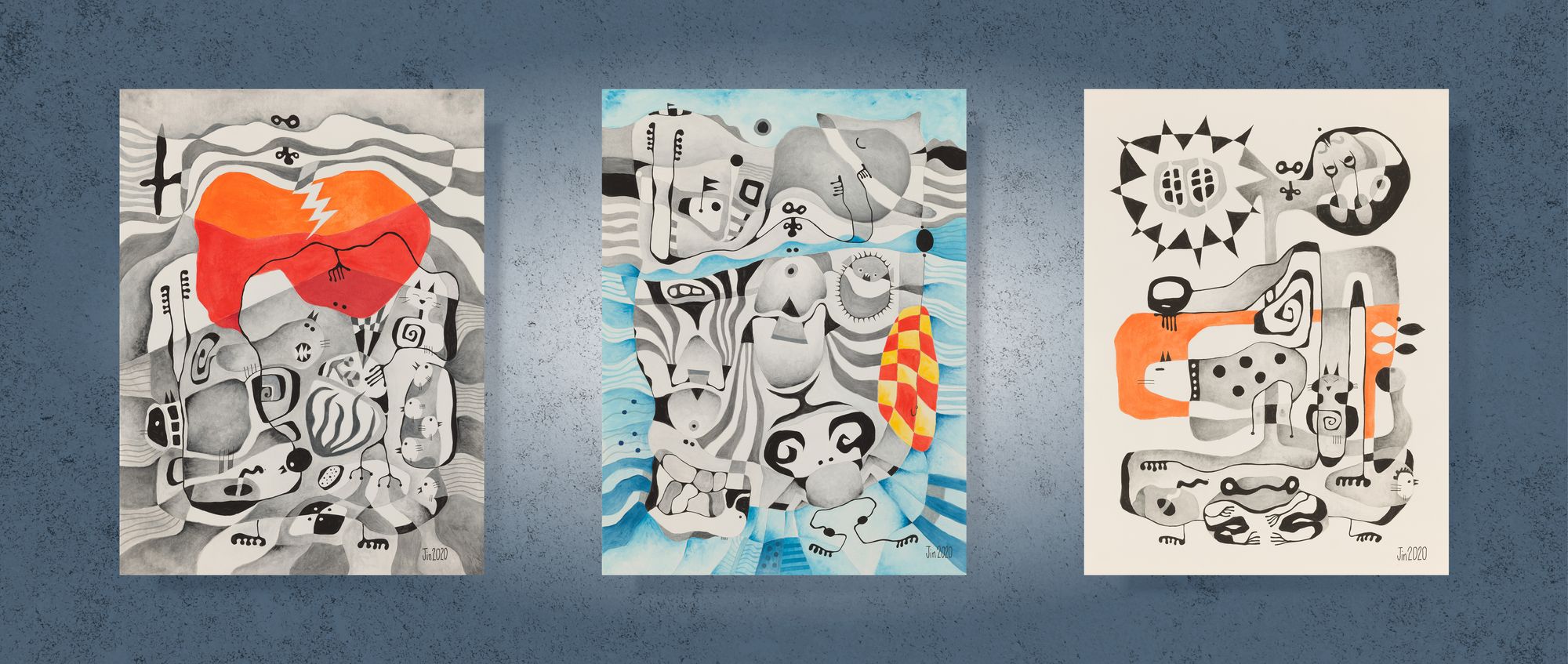
At the second level are animals woven into the structure; their shapes are quite common and you would probably catch them quite fast as you approach the painting. I have found that my grandchildren are quite fond of discovering such images and they have enjoyed my art.
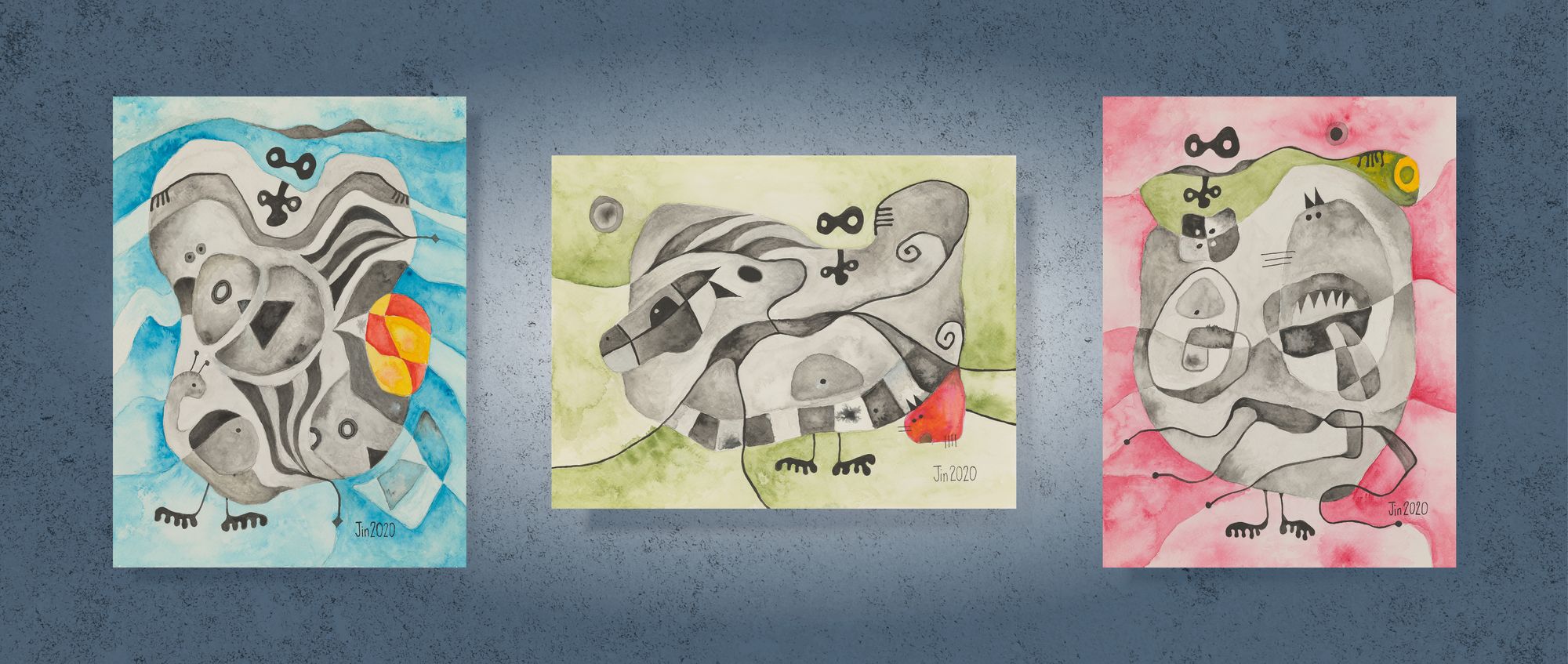
Creative adult is the child that survived? ** Click to read
Speaking of children, I recently attributed the following quote to the late Ursula K Le Guin: “The creative adult is the child that has survived.” Curious about the context in which the statement was made, I checked and found out that it was not hers. I discovered instead an incisive essay in her blog entry of Oct 2014 called “The Inner Child and the Nude Politician” in which she rebutted the ideas contained in the quote.
She wrote: “Some mystics and many great artists, aware of drawing on their childhood as a deep source of inspiration, have spoken of the need to maintain an unbroken inner connection between the child and the adult in one’s own inward life.
“But to reduce this to the idea that we can open a mental door from which our imprisoned Inner Child will pop out and teach us how to sing, dance, paint, think, pray, cook, love, etc. . . . ?
“A very wonderful statement of the necessity, and the difficulty, of maintaining a connection to one’s own child-self is Wordsworth’s “Ode on Intimations of Immortality.” The poem offers a profoundly felt, profoundly thoughtful, radical argument:
Our birth is but a sleep and a forgetting . . .
“Instead of seeing birth as an awakening from blank nonbeing and fetal incompletion into the child’s fullness of being, and seeing maturity as a narrowing, impoverishing journey toward blank death, the ode proposes that a soul enters life forgetting its eternal being, can remember it throughout life only in intimations and moments of revelation, and will recall and rejoin it fully only in death.
“Nature, says Wordsworth, offers us endless reminders of the eternal, and we are most open to them in our childhood. Though we lose that openness in adult life, when “custom” lies upon us “with a weight/heavy as frost, and deep almost as life,” still we can keep faith with
Those shadowy recollections,
Which, be they what they may,
Are yet the fountain-light of all our day,
Are yet a master-light of all our seeing;
Uphold us, cherish, and have power to make
Our noisy years seem moments in the being
Of the eternal Silence: truths that wake
To perish never.
Read more here
Also interwoven, at the third level, are people (and other things) that are not so common. You need a bit of time to sort them and their actions out. Common in these structures are people, sometimes pot-bellied with spectacles, nose and legs (at the bottom) — like an Alfred Hitchcock appearance in his movies.
